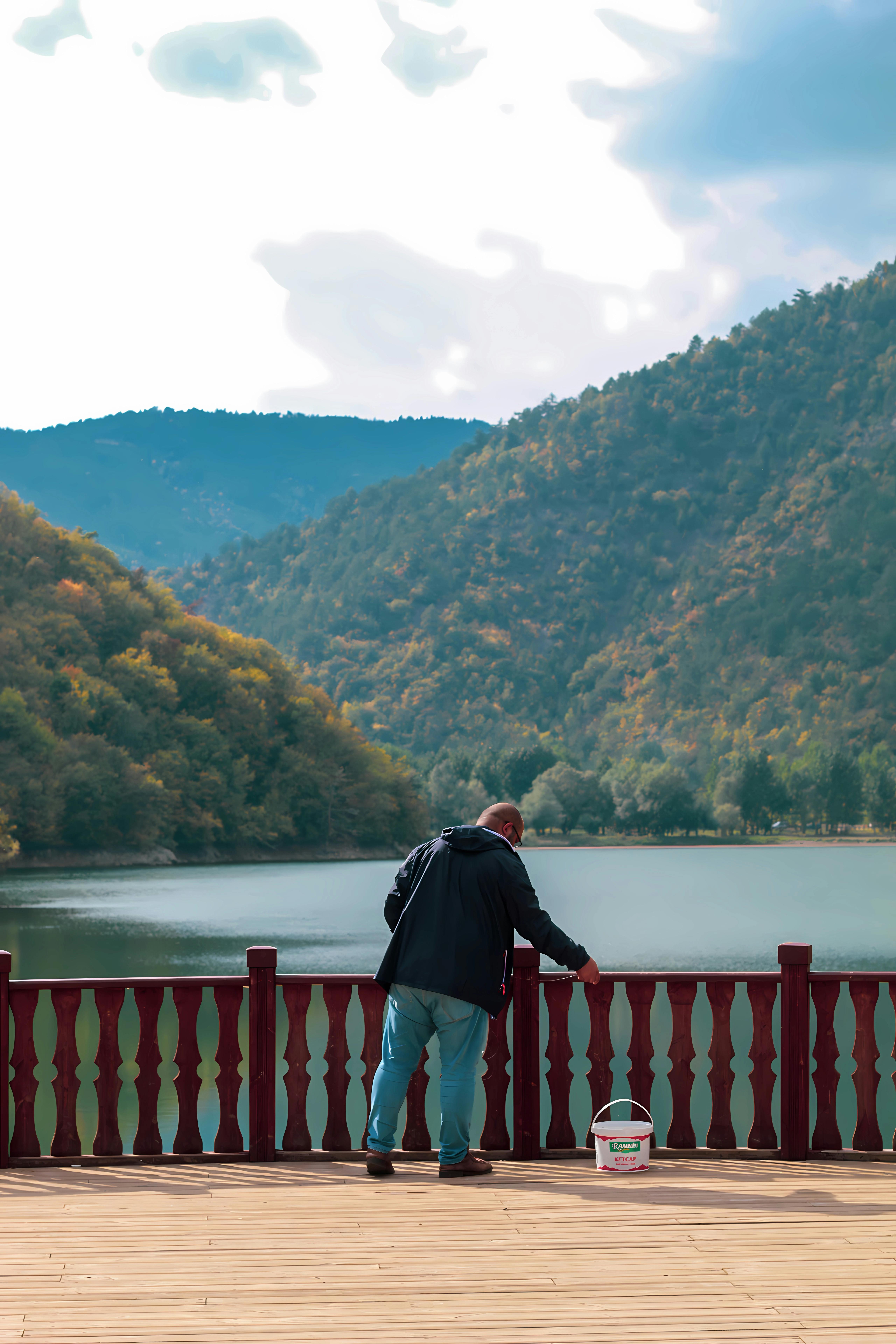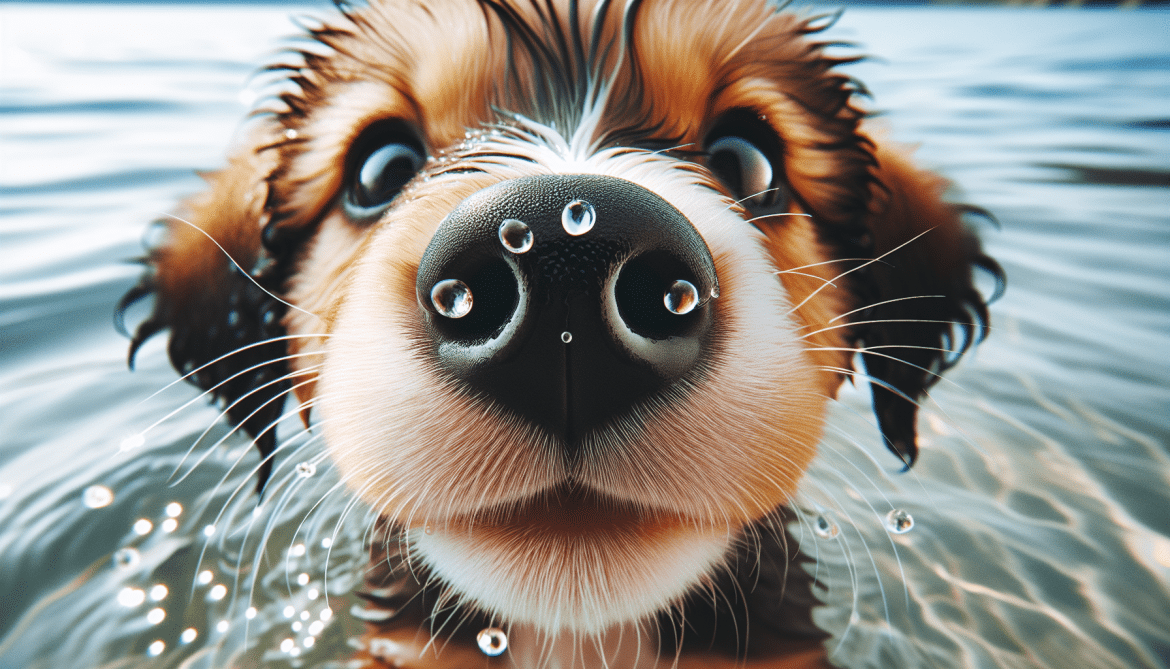Imagine taking your adorable little puppy for a fun day out by the serene lakeside. The warm sun kisses your skin as you watch your furry friend frolic in the water. But wait, can puppies actually swim in lakes? In this article, we explore the exciting and sometimes challenging world of puppies and their ability to navigate the watery depths. From their natural instincts to the importance of training, we'll uncover everything you need to know about whether or not puppies can swim in lakes. So, grab a cup of tea, sit back, and let's dive into this delightful topic!
Factors that affect a puppy's ability to swim in lakes
Swimming abilities can vary among puppies based on several factors. Firstly, the breed of the puppy plays a significant role in determining their swimming capabilities. Certain breeds, such as Labrador Retrievers and Golden Retrievers, tend to have natural instincts and abilities that make swimming easier for them. On the other hand, some breeds may struggle more due to their body structure or lack of natural swimming instincts.
The age of the puppy is another important factor to consider. Puppies younger than eight weeks old are generally too young to be introduced to swimming in lakes. Their bodies are still developing, and they may not have the necessary strength and coordination to swim effectively. It is essential to wait until the puppy is older and more physically capable before attempting to teach them to swim.
Another factor to consider is whether the puppy has been exposed to water before. Puppies who have had positive experiences with water in the past, such as during bath time or through controlled water play, may be more comfortable with swimming in lakes. Familiarity with water can help reduce the fear and anxiety that some puppies may experience when introduced to swimming for the first time.
The puppy's health is also a crucial consideration. If a puppy has any health issues, such as joint problems or respiratory conditions, they may face difficulties while swimming. It is important to consult with a veterinarian to ensure that the puppy is physically fit for swimming activities. In some cases, puppies with specific health conditions may need to avoid swimming altogether or require extra precautions and supervision.
Finally, the size and weight of the puppy can impact their swimming abilities. Smaller and lighter puppies may find it easier to stay afloat and maneuver in the water compared to larger, heavier breeds. However, it is important to note that size alone does not determine a puppy's swimming abilities, as other factors like breed and individual traits play a significant role as well.
Swimming instincts in puppies
Puppies are born with some innate swimming capabilities, but they may also exhibit a fear of water. Instinctively, puppies have the ability to paddle and move their legs in a swimming-like motion, which can help them stay afloat and move through the water. This instinctive swimming ability is more prominent in some breeds than others.
Despite possessing these natural swimming instincts, puppies can also be fearful of water. This fear can be due to various reasons, such as a negative past experience or unfamiliarity with water. It is essential to approach swimming training with patience, positive reinforcement, and a gradual introduction to help overcome this fear and build the puppy's confidence.

This image is property of images.pexels.com.
Introducing a puppy to swimming in a lake
When introducing a puppy to swimming in a lake, it is crucial to start in a shallow area where the water level is low enough for the puppy to comfortably touch the ground. This initial step allows the puppy to gradually adjust to the sensation of water and build their confidence. Be patient and give the puppy time to explore and acclimate at their own pace.
Positive reinforcement plays a vital role in the swimming training process. Encourage the puppy with treats, toys, and verbal praise whenever they enter the water or make any progress. This positive association helps the puppy associate swimming with a rewarding and enjoyable experience. By consistently reinforcing positive behaviors, the puppy will become more willing to engage in swimming activities.
As the puppy grows more comfortable with shallow water, gradually move to deeper areas. The transition should be gradual to prevent overwhelming the puppy and ensure continuous progress. It is important to monitor the puppy's comfort level and never force them into water that is too deep or unfamiliar. Always prioritize the puppy's safety and well-being throughout the training process.
To ensure the puppy's safety, it is recommended to have them wear a proper flotation device, especially in deeper water. Floatation devices designed for dogs provide an extra layer of buoyancy, offering peace of mind and support to the puppy as they explore their swimming abilities. However, remember that a flotation device does not replace close supervision, as accidents can still occur.
Teaching a puppy to swim in a lake
When teaching a puppy to swim in a lake, it is essential to take a slow and gentle approach. Allow the puppy to take their time to explore and become accustomed to the water gradually. Patience and reassurance are key in helping the puppy gain confidence and enjoy the experience.
Encourage the puppy to make paddling and kicking motions with their legs while in the water. Gently hold and support the puppy's body from underneath to help them maintain buoyancy and develop the muscle strength necessary for swimming. Verbal encouragement and rewards can motivate the puppy to continue practicing and gradually improve their swimming abilities.
Helping the puppy find their way to the shore can also be part of the training process. Guide them towards the edge of the lake and assist them as needed. This step teaches the puppy how to navigate and reach safety in case they become tired or disoriented while swimming. Repeat these training sessions regularly to reinforce the puppy's swimming skills and gradually increase their endurance.

This image is property of images.pexels.com.
Safety precautions for puppies swimming in lakes
While swimming can be a fun and beneficial activity for puppies, it is important to take certain safety precautions to ensure their well-being. One crucial factor to consider is the water temperature. Puppies are more sensitive to cold water than adult dogs, so it is important to choose lakes with warmer water or swim during the warmer months. Cold water can cause hypothermia, which can be dangerous for the puppy's health.
Additionally, it is essential to constantly monitor the puppy for signs of exhaustion or distress while swimming. Puppies may not have the stamina and endurance of older dogs, so it is important to provide them with frequent breaks and allow them to rest. Signs of exhaustion can include excessive panting, slowed movements, or reluctance to continue swimming.
Preventing the puppy from drinking lake water is another safety consideration. Lake water can contain harmful bacteria, parasites, or toxins that may cause gastrointestinal issues or other health problems in puppies. It is best to discourage the puppy from drinking the water by providing fresh clean water to drink instead.
Beware of potential hazards in the water that could pose a risk to the puppy's safety. Sharp rocks, submerged branches, or strong currents can be dangerous, especially for inexperienced swimmers. Always carefully assess the swimming area for any potential hazards and avoid areas where the water conditions are unpredictable or unsafe.
Lastly, keep an eye out for any signs of discomfort or fear during swimming sessions. If the puppy appears anxious or exhibits signs of distress, it is important to address their concerns and adjust the training accordingly. The well-being and emotional state of the puppy should always be the priority.
Benefits of swimming for puppies
Swimming provides numerous benefits for puppies, both physically and mentally. Firstly, swimming is an excellent form of physical exercise for puppies. It allows them to engage in a full-body workout, utilizing various muscle groups and promoting cardiovascular health. Swimming is a low-impact activity that puts minimal stress on the joints, making it suitable for puppies with joint issues or those recovering from injuries.
In addition to physical exercise, swimming helps improve muscle strength and coordination in puppies. The resistance and buoyancy of water challenge the muscles, helping them develop and grow stronger. Regular swimming sessions can enhance the puppy's overall coordination and balance, leading to improved motor skills and agility.
Swimming also promotes joint and bone health in puppies. The water's buoyancy reduces the impact and stress placed on the joints, making swimming a safe and beneficial activity even for puppies with existing joint conditions. It can aid in maintaining joint flexibility and preventing stiffness or discomfort.
Swimming in lakes also provides socialization opportunities for puppies. Interaction with other dogs and humans in a controlled water environment can help puppies become more comfortable and confident in social settings. It can also be a great bonding experience for puppy owners, as they participate in the swimming activities together.
Furthermore, swimming offers mental stimulation for puppies. The sensory experience of being in the water, combined with the need to navigate and coordinate their movements, engages the puppy's mind. This mental stimulation can help alleviate boredom and prevent destructive behaviors in puppies.

This image is property of images.pexels.com.
Tips for taking puppies to swim in lakes
When planning to take puppies to swim in lakes, certain tips can ensure a safe and enjoyable experience for both the puppy and the owner. Firstly, choose calm and safe lakes with calm waters and shallow areas. Avoid lakes with strong currents, rough waves, or unpredictable water conditions that may pose risks to the puppy's safety.
Additionally, make sure the chosen lake is dog-friendly. Some lakes may have specific rules or restrictions regarding dogs, so it is important to research and comply with any regulations. Respect the environment and other lake users by cleaning up after the puppy and being mindful of any guidelines provided by the lake authorities.
Pack essential items such as towels and fresh water for the puppy. Towels are necessary to dry off the puppy after swimming, preventing them from becoming chilled or uncomfortable. Fresh water allows the puppy to stay hydrated throughout the swimming session and helps prevent them from drinking lake water.
Bringing toys can enhance the fun and motivation during swimming sessions. Choose toys that are safe for water play and float to keep the puppy engaged and entertained. Interactive toys can encourage the puppy to swim and retrieve, adding an extra element of excitement to the swimming experience.
When puppies should not swim in lakes
While swimming in lakes can be a beneficial activity for most puppies, certain situations warrant caution or avoidance of swimming altogether. Puppies with health issues that affect their mobility or respiratory function may need to refrain from swimming to prevent further complications. It is always crucial to consult with a veterinarian before introducing a puppy with health conditions to swimming activities.
Puppies under eight weeks old should not swim in lakes. At this early age, their bodies are still developing, and they may not have the physical abilities to swim comfortably and safely. It is important to wait until the puppy is older and stronger before introducing them to swimming.
In cold or extreme weather conditions, it is best to avoid taking puppies to swim in lakes. Puppies are more sensitive to temperature changes and may be prone to hypothermia or other weather-related health problems. Choose warmer days and ensure the water temperature is suitable for the puppy's well-being.
Alternatives to lake swimming for puppies
If lake swimming is not feasible or suitable for a puppy, there are alternative options to provide them with swimming experiences. Puppy pools are a great alternative, especially for small breed puppies or those with limited access to lakes or dog-friendly beaches. Puppy pools are shallow, controlled environments that allow puppies to practice swimming skills and enjoy water play within a safe and controlled space.
Dog-friendly beaches are another alternative to lake swimming. These beaches often have designated areas where dogs can swim and play in the water. It is important to research and adhere to any rules or guidelines set by the beach authorities to ensure the safety and well-being of the puppy.
Assisted swimming lessons can also be beneficial for puppies who require additional support and guidance while learning to swim. Professional trainers or experienced individuals can provide structured swimming lessons tailored to a puppy's specific needs and abilities. These supervised sessions can help build the puppy's confidence and swimming skills in a controlled and safe environment.
Conclusion
Swimming in lakes can be a fun and rewarding experience for puppies, but it is important to consider various factors that may affect their ability and comfort level in the water. Factors such as breed, age, previous water exposure, health conditions, and size/weight can influence a puppy's swimming abilities. Introducing a puppy to swimming should be done gradually and with positive reinforcement, focusing on building their confidence. Safety precautions, such as monitoring water temperature, preventing drinking of lake water, and being aware of potential hazards, are crucial during swimming sessions. Swimming provides numerous benefits for puppies, including physical exercise, improved muscle strength, joint and bone health, socialization opportunities, and mental stimulation. Before taking puppies to swim in lakes, it is essential to choose appropriate locations, pack necessary items, and be aware of any restrictions or safety guidelines. In certain situations, alternatives such as puppy pools, dog-friendly beaches, or assisted swimming lessons can be considered. By considering these factors and following the necessary precautions, puppies can safely enjoy the pleasures and benefits of swimming in lakes.


